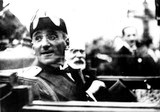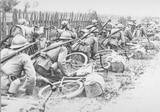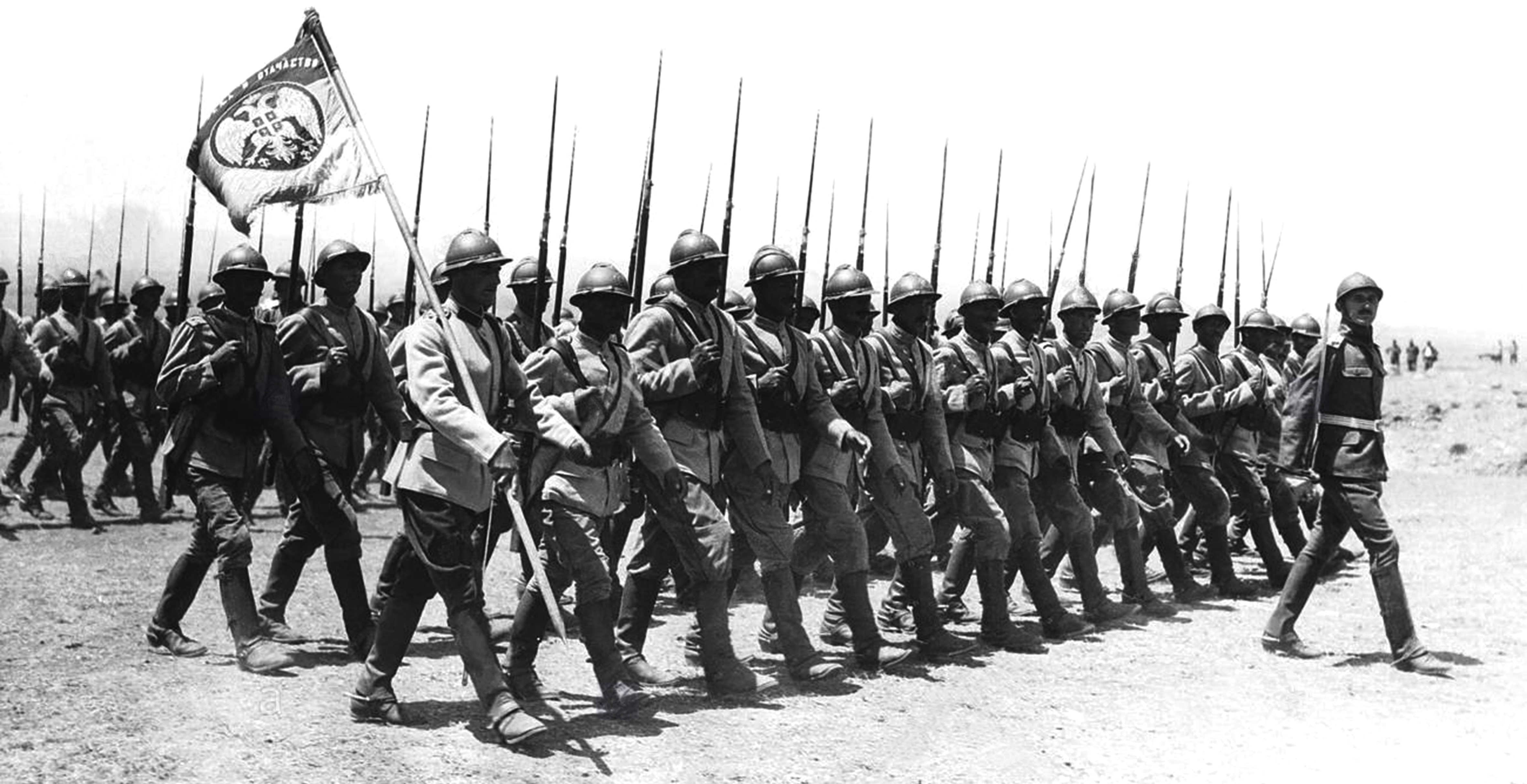Collection of photographs and photo artifacts
The stock of photographs and photographic artefacts is the largest collection in the Military Museum, consisting of material recorded on glass photographic plates, panoramic negatives, negatives and photographs. In order to make it easier to navigate through the abundance of material, the photo-documentation is divided into special funds covering different time periods. The fund of early war history covers the period from the appearance of the first photographs in Serbia and the first traveling photographers until the end of the First World War. This, perhaps the most important fund, contains very important photographs that represent the cultural heritage of the Serbian people.

Many photos from this fund are already known to the public because they are found, as illustrations, in almost all historical works, textbooks, newspaper articles and feuilletons dealing with this period. Numerous photographs of the Serbian dynasties Obrenović and Karađorđević, as well as many famous and important personalities, have been preserved, as well as photographs of young people who will only later fight for their place in history, become famous and famous. This is exactly the case with the pictures of the young, still beardless, cadet of the 32nd class of the Royal Serbian Military Academy, Vojislav Tankosić or the young lieutenant Živojin Mišić. As the history of the Serbian people from the beginning of the 20th century was marked by great trials of war, first in the wars of liberation, and later in the defense of the homeland in the First World War, so the photographs from this period are mostly documentary images of human suffering, suffering and the struggle for survival. The correctly understood importance of photographs made it possible to significantly influence the formation of public opinion through their publication in the foreign press. The Serbian army also used photographs as a powerful tool to raise the morale of its own troops, which is best evidenced by a letter from the Danube Division dated November 12, 1917, which is kept together with a photograph in the collection of the Military Museum.

After 1918 and the end of the World War, the interest in photography did not stop. Now, in peacetime conditions, numerous photographers record various important events that occupied the attention of the public of the newly formed state, and which are now stored in the Press Bureau's fund. Scenes of the signing ceremonies of important state agreements, such as the Little Entente or Balkan Entente alliance treaties, alternate with images of ceremonial receptions by various state delegations, such as the visit of the US Chief of General Staff, General Douglas MacArthur, during September 1931. However, there are far more photographs that show the ordinary life of ordinary people and ordinary soldiers. Regimental celebrations, maneuvers, parades, gymnastic exercises as well as exercises on the shooting range clearly evoke the daily, peacetime tasks of the royal army. War events in the new World War, suffering, suffering, fear and pain again found themselves in front of the lenses of numerous amateurs and professional photographers.

Aware of the enormous power of photography, all sides in this conflict tried to record as many significant moments as possible and use them for their own purposes. The photographs clearly record the downfall and capitulation of the royal army and the taking of officers and soldiers into captivity. Scenes of the German occupation and reprisals against the population, such as mass shootings in Šabac, Kraljevo and Kragujevac, and the hanging of patriots on street lampposts in the central streets of Belgrade, have an extremely shocking effect on the observer.

The resistance movements that appeared all over Serbia also had their photographers who faithfully recorded the events of those glorious days of the beginning of the uprising against the occupiers, numerous battles, sufferings and victims until the final victory of the NOV forces and the surrender of the occupying units in Slovenia in May 1945. Of all the photographs kept in the World War II fund, the most impressive are certainly those collected by the State Commission for the determination of the crimes of the occupiers and their helpers. Scenes of disfigured and mutilated bodies leave a heavy and painful impression on everyone who looks at them, even if only briefly.
These photographs are extremely significant because they represent almost the only way in which today's observer can understand the true horrors of war without experiencing them himself.
These photographs are extremely significant because they represent almost the only way in which today's observer can understand the true horrors of war without experiencing them himself.

The series of photographs taken by official photographers and photo reporters who followed various enemy armies and units are extremely interesting to the researchers. The most extensive such series consists of recordings of German reporters who immortalize the campaign of the German army in the USSR and in North Africa.
The collection also has photographs of visits by important personalities and important state delegations. Our institution had the honor of showing its permanent exhibition to the British Queen Elizabeth (1970) as well as the heir to the British throne Prince Charles (1978), the President of the Republic of France François Mitterrand (1983), but also the Prime Minister of Vietnam Ho Chi Minh (1957) or the Cuban revolutionary, then Minister of Foreign Affairs of Cuba Ernesto Che Guevara (1957). The photo archive of the Military Museum is trying to keep pace with the advent of new, digital technologies, which is best evidenced by the digitization of the entire collection, which will make this huge cultural treasure of our people much more accessible to all interested researchers of our past.
The collection is handled by: Petar Žarković
The collection also has photographs of visits by important personalities and important state delegations. Our institution had the honor of showing its permanent exhibition to the British Queen Elizabeth (1970) as well as the heir to the British throne Prince Charles (1978), the President of the Republic of France François Mitterrand (1983), but also the Prime Minister of Vietnam Ho Chi Minh (1957) or the Cuban revolutionary, then Minister of Foreign Affairs of Cuba Ernesto Che Guevara (1957). The photo archive of the Military Museum is trying to keep pace with the advent of new, digital technologies, which is best evidenced by the digitization of the entire collection, which will make this huge cultural treasure of our people much more accessible to all interested researchers of our past.
The collection is handled by: Petar Žarković

